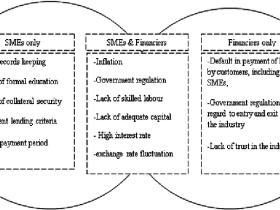The loan origination process has traditionally been seen as a cumbersome and time-consuming endeavor. From gathering financial documents to filling out paperwork, it could take weeks or even months for borrowers to get a loan approved. However, with the advent of new lending technology, the loan origination process is being reshaped and streamlined, making it faster, more efficient, and ultimately, more borrower-friendly. In this article, we will explore how new lending technology is revolutionizing the loan origination process and what it means for borrowers and lenders alike.
1. Online Applications: Simplifying the Borrower Experience
Gone are the days of in-person loan applications and paper documents. With new lending technology, borrowers can now complete the entire loan application process online. This not only saves borrowers time and effort but also allows lenders to gather information quickly and accurately. From income verification to credit history, all the necessary data can be collected in real-time, eliminating delays and reducing the chances of errors.
2. Automated Underwriting: Speeding up the Approval Process
One of the most significant advancements in lending technology is automated underwriting. Instead of relying on manual review and analysis of borrower information, lenders can now use automated systems to evaluate the creditworthiness of applicants. By utilizing algorithms and data analytics, lenders can make faster and more accurate decisions when approving or denying loans. This not only speeds up the approval process but also ensures consistency and fairness in loan decisions.
3. Digital Verification: Enhancing Security and Fraud Prevention
In the past, verifying documents submitted by borrowers was a time-consuming and labor-intensive task. However, with new lending technology, lenders can now access various databases and digital platforms to verify borrower information. From income verification to identity verification, these systems can quickly and securely authenticate the documents provided by borrowers, reducing the risk of fraud and increasing the overall security of the loan origination process.
4. Real-Time Communication: Improving Transparency and Customer Service
Communication between borrowers and lenders has also been greatly improved with the help of new lending technology. Borrowers can now receive real-time updates on their loan applications, view the progress of their loans, and interact with lenders through secure online platforms. This not only enhances transparency but also provides borrowers with a more personalized and efficient customer service experience. Lenders can address any concerns or questions promptly, resulting in higher customer satisfaction levels.
5. Streamlined Document Management: Reducing Paperwork and Errors
Managing and storing documents has always been a challenge in the loan origination process. However, with new lending technology, lenders can now digitize and store loan documents electronically. This eliminates the need for excessive paperwork and reduces the chances of documents getting lost or misplaced. Furthermore, advanced document management systems can automate the organization and retrieval process, making it simple and efficient for lenders to access the necessary documents at any time.
Conclusion
New lending technology is reshaping the loan origination process by simplifying the borrower experience, speeding up the approval process, enhancing security, improving transparency, and reducing paperwork and errors. These advancements are not only benefiting borrowers by providing a faster and more user-friendly experience, but they are also empowering lenders by increasing efficiency and reducing costs. As technology continues to evolve, we can expect further innovations in the loan origination process, making it even more seamless and convenient for all parties involved.








Leave a Reply